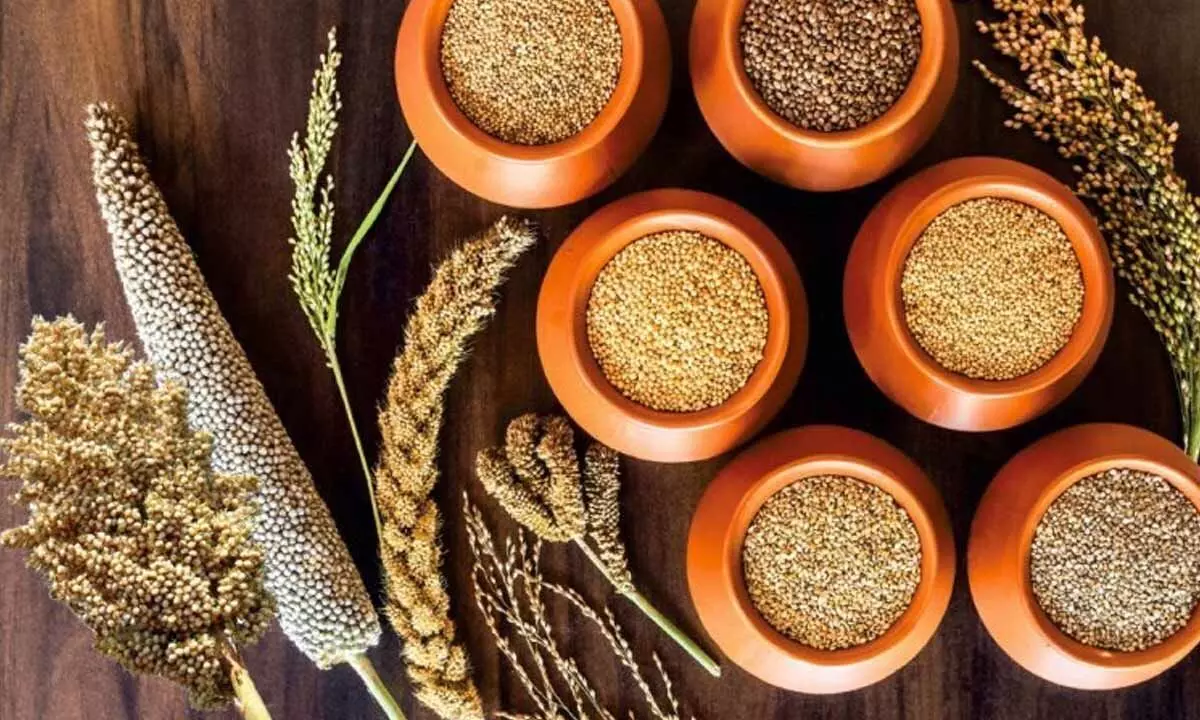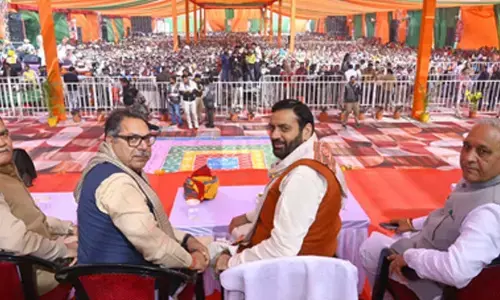NITI report on fall in millets use worrying

The NITI Aayog report reinforces the importance of millets and highlights the reasons behind their declining cultivation in India.
The NITI Aayog report reinforces the importance of millets and highlights the reasons behind their declining cultivation inIndia. India’s Millet Revolution is driven by growing awareness of the health and environmental benefits of millets, as well as efforts to revive traditional agricultural practices and support small-scale farmers. It is seen as a solution to the country's dual challenges of improving public health and promoting sustainable agriculture.
Indeed, India has a rich heritage of producing all the nine commonly known traditional millets, including Sorghum, Pearl Millet, Finger Millet, Foxtail Millet, Proso Millet, Little Millet, Barnyard Millet, Brown top Millet, and Kodo Millet. Millets have been a staple food in many regions of India, particularly for marginalized communities and small farmers, due to their resilience and adaptability to hot and drought-prone environments.
The changing dietary patterns, influenced by various factors including urbanization, globalization, and shifting consumer preferences, have contributed to millets taking a back seat in daily diets. This has resulted in a nutritional paradox in India, where issues of undernutrition and hidden hunger coexist even in food secure communities. Millets possess immense potential not just for food security but also for nutritional security in India. They are rich in micronutrients like minerals and B-complex vitamins, making them valuable in addressing malnutrition and micronutrient deficiencies.
Recognizing the increasing realization of the importance of millets, there is a need to refocus attention on their role in promoting dietary diversification and balanced diets. It is needed to integrate millets into government food programmes, school feeding initiatives, and public distribution systems to increase their consumption and availability. India can harness the potential of millets to promote dietary diversification and balanced diets, leading to improved food and nutrition security.
The nutritional superiority of millets, characterized by higher protein levels and a more balanced amino acid profile compared to other food grains, is an important aspect. Additionally, millets contain various phytochemicals that offer therapeutic properties due to their anti-inflammatory and antioxidant attributes.
The NITI Aayog report rightly points out that despite the benefits of growing millets, there has been a gradual shift in cereal growing preferences among Indian farmers towards rice and wheat. This shift can be attributed to the promotion and focus on rice and wheat production, along with a lack of suitable initiatives and support for millet cultivation. As a result, the area under millet cultivation has been declining.
To reverse this trend and promote the cultivation of millets, it is crucial to raise awareness about the nutritional and environmental benefits of millets, as well as provide support and initiatives for farmers. This can include incentivizing millet cultivation through policies, creating market linkages and infrastructure, incorporating millets into government programs, and promoting the value and demand for millet-based products. By addressing these factors, India can revive millet production, benefit small farmers, and promote a more diverse and sustainable food system.
Millets are generally more resilient to drought, heat, and other adverse weather conditions compared to other major cereals. However, climate change-induced shifts in temperature, rainfall patterns, and increased frequency of extreme weather events can still negatively impact millet production. Erratic rainfall, prolonged droughts, and heatwaves can lead to crop failure and decreased yields. Inadequate storage facilities, processing units, and market linkages pose challenges for millet farmers. Limited infrastructure and market support result in lower profitability and discourage farmers from investing in millet cultivation. Increased investment in research and development for millets can lead to the development of improved varieties that are more resilient, have higher yields, and meet consumer preferences. This includes efforts to enhance crop productivity, pest and disease management, and post-harvest technologies.
Raising awareness about the nutritional benefits of millets and promoting their consumption can help create demand and increase market opportunities. Educating consumers about the versatility and health benefits of millets can drive consumer preference and support farmers in cultivating these crops.
Governments can play a crucial role in supporting millet cultivation through policies that provide incentives, subsidies, and infrastructure development. Encouraging crop diversification, incorporating millets into government feeding programs, and promoting sustainable farming practices can contribute to revitalizing millet production.
Strengthening market linkages, improving value chains, and developing processing and storage infrastructure can enhance the marketability of millets. Providing market access and fair prices to farmers can incentivize increased production. Facilitating knowledge exchange, training programs, and capacity building initiatives for farmers can equip them with the necessary skills and knowledge to cultivate millets effectively. This includes promoting best agronomic practices, water management techniques, and climate-smart farming methods. By addressing these factors and implementing supportive measures, it is possible to reverse the declining trend in millet crop production and restore the importance of millets in sustainable agriculture and food systems.
(Writer is President, Praja Science Vedika)
















